Living with ADHD can make it hard to stay organized – but simple tools and strategies can help. Here’s a quick guide to getting started:
These steps can help you create a system tailored to your needs, making it easier to stay on track and reduce overwhelm.
The right planner can make managing ADHD symptoms much easier. The trick is to find one that works with your habits and daily routine. Below are some popular options to consider:
| Planner Type | Best For | Key Features |
|---|---|---|
| Hobonichi Weeks | Those who like structure | Pre-dated layouts, compact size, high-quality paper |
| Bullet Journal | Creative thinkers | Fully customizable, flexible layouts, blank pages |
| Pre-made Planners | Quick organization | Pre-designed sections, prompts, ready-to-use format |
When choosing, aim for a size that’s easy to carry but still provides enough space for your planning needs.
The right supplies can make planning both enjoyable and effective, especially for tackling ADHD-related challenges like starting tasks and maintaining focus.
Helpful Tools:
By using stickers and visuals creatively, you can design layouts that feel structured and engaging. This minimizes decision fatigue and makes planning feel less overwhelming.
Once you’ve got your tools ready, the next step is learning how to use them to stay organized and on track.
Color-coding can make tasks easier to understand by turning them into clear visual categories. Assign specific colors to different types of tasks to create a simple system:
| Task Category | Color | Example Sticker/Icon |
|---|---|---|
| Urgent/Important | Red | Exclamation icon |
| Work Projects | Blue | Laptop icon |
| Personal Tasks | Green | House icon |
| Appointments | Purple | Clock icon |
Stick to the same color scheme across all your planning tools to keep things consistent. Once you’ve categorized tasks, the next step is structuring your day to stay focused.
Time-blocking helps break your day into smaller, easier-to-handle sections, reducing feelings of overwhelm. Try using 90-minute focus blocks followed by 10-minute breaks, and include buffer time for transitions.
Here’s an example schedule:
The key is to make this system something you’ll actually stick to, so find ways to make it enjoyable.
For people with ADHD, staying engaged with a planning system is essential. Turn planning into a creative activity by adding elements that spark joy. Sticker kits like Dark Moon Paper’s "Lilac Dusk" or "Electric Forest" can transform your planner into a visually appealing space.
Here are some ideas for using decorations:
"Journaling provides a safe space for individuals with ADHD to externalize their thoughts, feelings, and ideas, helping to declutter their minds and improve focus." – Reflection.app [1]
Keep in mind that decorations should support your planning system, not distract from it. Focus on keeping your layout functional while adding creative touches that make the process enjoyable and easy to maintain.
Developing consistent planning habits is all about creating a system that aligns with how ADHD brains work. Start small: spend 10 minutes each morning reviewing your tasks for the day, and another 10 minutes each evening preparing for tomorrow. These short, focused sessions are easier to stick with and feel less overwhelming.
Here’s a simple structure to guide your routine:
| Time of Day | Planning Activity | Duration | Trigger |
|---|---|---|---|
| Morning | Daily Task Review | 10 min | After coffee/tea |
| Evening | Next Day Prep | 10 min | After dinner |
| Sunday | Weekly Overview | 20 min | Before starting the week |
Keep your planner in a spot you see often – like next to your coffee maker or on your nightstand. This visual cue can help remind you to use it. Add stickers, colors, or other visual markers to make your planning sessions stand out and feel inviting.
Once you’ve nailed down the routine, the next step is staying motivated to keep it going.
To stick with your planning habit, make it enjoyable and rewarding. Turn your planning time into something fun by experimenting with different themes or designs each week. These tweaks can help address ADHD-related challenges like forgetfulness and difficulty staying consistent.
Here are some ideas to keep things interesting:
Don’t let perfectionism throw you off course. Missed a day? No big deal – just pick up where you left off. Progress matters more than perfection [1][2].
Using the tools and routines mentioned earlier can help tackle organizational struggles often linked to ADHD. When tailored to fit your preferences, these strategies can create a reliable system for staying on top of tasks. Visual aids like stickers and color coding make it easier for ADHD brains to process and remember information by turning tasks into more engaging visuals.
Writing down your thoughts in a journal can also lighten mental strain, helping you stay focused. Think of it as an external "second brain" that helps you keep track of daily tasks and responsibilities. Combining structured tools, visual elements, and consistent habits creates a system that promotes focus, productivity, and self-expression.
The best system is one that fits your style and that you’ll actually stick with. Whether you enjoy colorful layouts or prefer simple bullet points, the goal is to find an approach that works with how your brain operates. Start small, be patient, and focus on building habits over time. Progress matters more than perfection, and sticking with it is what truly counts.
Take that first step today, even if it’s small. Over time, your planning system can become a powerful tool for boosting productivity and creativity. With the right tools and consistent effort, you can turn organizational challenges into opportunities for growth.
The ideal planner for ADHD varies based on personal preferences. Options like the Happy Planner offer creative layouts, while the Planner Pad provides more structure. For those who prefer a mix of digital and physical planning, the Rocketbook serves as a great hybrid option. If you lean towards digital solutions, tools like ClickUp or Notion stand out with customizable templates and access across devices.
To make physical planners even more effective, try adding elements like stickers, color coding, or visual cues. These small tweaks can turn your planner into an engaging and ADHD-friendly tool.
Bullet journaling is often a top choice for individuals with ADHD because it combines structure with flexibility. This method seamlessly integrates task management, creativity, and personal reflection into one system that you can fully customize.
What makes bullet journaling especially helpful for ADHD is its visual and adaptable nature. You can tweak layouts as needed and use visual aids to make information easier to process – building on the strategies we’ve discussed earlier for staying organized.
Stickers Made for Planning
Our custom stickers are a fuss-free way to brighten up your planner pages with perfectly-sized designs that add a spark of personality to every layout.
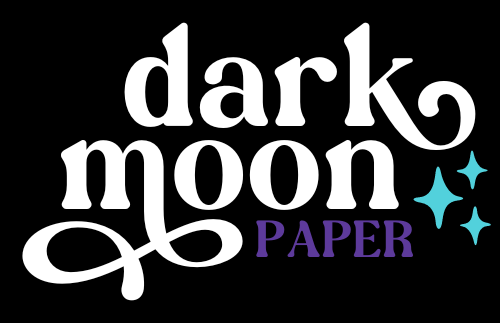
Why use planner stickers?
Planner stickers make organizing easy, fun, and personal! Add color, creativity, and structure to every page, transforming your planner into a tool that reflects you. Perfect for tracking, decorating, and staying inspired daily!
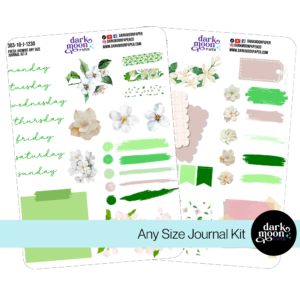
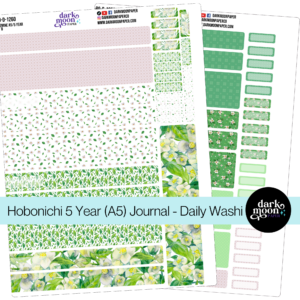
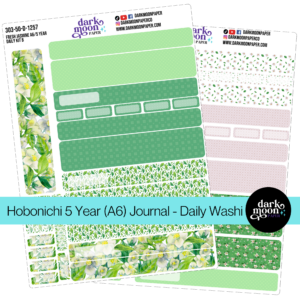
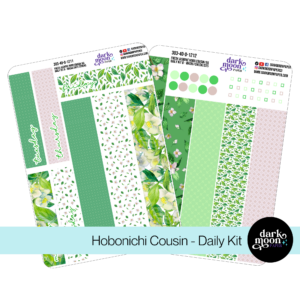
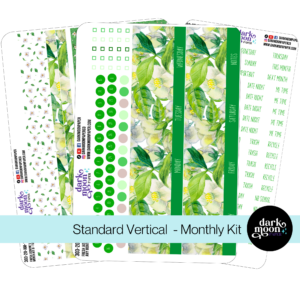
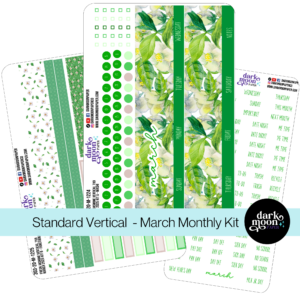
Hello and welcome!
I’m Rachael Snow, a lifelong artist and entrepreneur, and I started Dark Moon Paper to blend my love of art, technology, and the mysterious beauty of the world around us. My sticker kits are meant to set the mood, tell a story, and give you a little escape from the ordinary.
I work from my cozy studio tucked away in the beautiful woods of Oregon, surrounded by nature and a dark night sky full of stars.